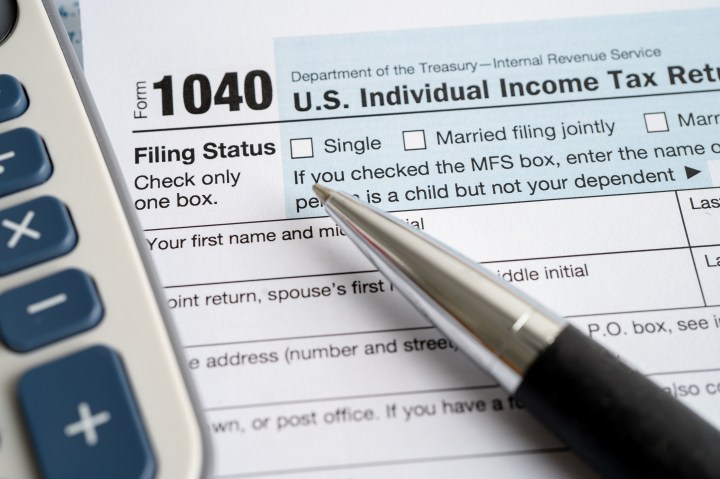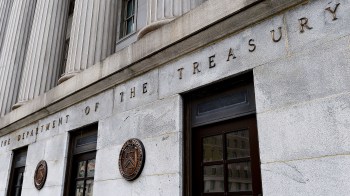
What would happen if we could choose where our taxes go?

This is just one of the stories from our “I’ve Always Wondered” series, where we tackle all of your questions about the world of business, no matter how big or small. Ever wondered if recycling is worth it? Or how store brands stack up against name brands? Check out more from the series here.
Eric Schow asks:
I’ve always wondered what would happen if Americans directly got to choose where a portion of their taxes went. I know we elect representatives for this, but why not take the middleman out of a portion of it. Say 50%, then of that 50%, I want 35% to go to education, 25% to go to hospitals, 25% to go to energy, and 15% to go to military. What would happen if we did that?
If the U.S. decided to reallocate the $921 billion in taxes that Americans are paying for the military, that money could instead be used to pay for, over the span of a year, 7.25 million registered nurses or help fund nearly 96 million public housing units.
That’s according to the National Priorities Project, a federal budget research organization that has an online tool allowing you to see what trade-offs you can make if you cut money from different federal programs.
But right now, this power only exists as a hypothetical.
“We have a republic or a representative democracy, not a pure democracy where people are deciding. I think that’s one of the frustrations with government. The taxpayer is distant from the spending decisions,” said Michael Graetz, a professor emeritus at Columbia Law School and author of the upcoming book “The Power to Destroy: How the Antitax Movement Hijacked America.”
In 2022, the average taxpayer in the U.S. paid nearly $13,400 in federal income taxes, according to the NPP.
If you want to get a sense of where our money is going, here’s a breakdown of the big-ticket categories:
More than $3,600 of that $13,400 went toward health-related expenses, including Medicaid and Medicare. Almost $2,400 went to the military, about $1,690 went toward education, and more than $1,120 was used for unemployment- and labor-related programs, services and benefits. (If you’re also curious how your personal tax receipt breaks down, you can plug in your tax amount here.)
Where would our money go if we had the choice?
Only about one-fifth of Americans like how their taxes are being spent, according to a 2020 survey from GOBankingRates.
Overall, most Americans would want to spend their taxes on social insurance such as Social Security and Medicare.
Graetz said people don’t mind paying for Social Security now because it goes toward their own retirement savings.
“If you look historically over a long period of time, both in the states and the federal government, earmarking taxes reduces the resistance to taxes as long as the taxes are earmarked for something that people want,” Graetz said.
The GOBankingRates survey revealed that different demographics prioritize some categories of spending over others. If we could choose, the most important area of spending for those in the 18-24, 25-34 and 35-44 age brackets would be education, while those in older age groups value social insurance the most.
The youngest demographic in the survey, those 18-24, prioritize defense and international security the least out of all age groups at almost 18% compared to about 32% of people who are 65 and older. The Israel-Hamas war underscores how contentious military spending can be as many protesters have called for a ceasefire — a popular position among young voters.
Kathleen DeLaney Thomas, a professor at the University of North Carolina School of Law, said if taxpayers could decide where their tax dollars are going, taxpayers might be more compliant and less likely to cheat on their taxes, according to the literature on this subject. The non-compliance rate is about 15%, which, Thomas pointed out, adds up to a lot of money.
One example of a popular policy that Thomas thinks could end up being funded if we had the choice is the expanded child tax credit, which was temporarily in effect back in 2021. The expanded tax credit provided more money to families and widened eligibility requirements. (Right now, a bill that would enhance the child tax credit is being considered in Congress.)
“Congress took away the expansion by essentially letting it expire, reversing all these wonderful anti-poverty effects this expansion had. Given the proportion of people with children in the country … I found it to be a bit of a head scratcher that they were letting it expire,” Thomas said.
Thomas said that if there’s dysfunction in Congress, allowing the public to have a voice would be one upside to a policy that allowed taxpayers to choose.
But while there could be benefits to choosing where our money goes, Thomas said a huge concern is that valuable programs could end up being underfunded.
“What if nobody bothers to think about how much we need investment in infrastructure or highways?” she said.
John Buhl, communications director at the Urban-Brookings Tax Policy Center, also raised this issue and pointed out that the typical person may not like the Internal Revenue Service. Americans view the IRS the least favorably out of more than a dozen federal agencies and departments, according to a poll from the Pew Research Center. A little more than half of Americans had an unfavorable view, while 42% had a favorable opinion.
“But we need money for that service to collect the revenue that the government needs,” Buhl said.
Will Americans ever be able to choose where their taxes go?
The prospect of ever allowing Americans to choose where their money goes doesn’t seem likely. If a version of this ever did go into effect, Thomas said maybe only a small portion of your tax dollars would be able to be allocated by you.
Thomas said she thinks the idea could be nice; maybe you could allocate $1,000 of your tax dollars toward eight different spending categories of your choice, but questions would remain as to whether this small amount could boost morale and increase tax compliance.
Even if we can’t choose where all our money is going and while there can be downsides, Buhl said it’s important that people don’t feel like they’re in the dark about how their tax dollars are being spent, and that the public should have input on the process.
Buhl pointed out that a version of this takes place on the local government level, where there are public discussions and town halls to discuss projects that require tax revenue.
He said local government should give people more opportunities to give their input outside of working or non-traditional hours so that everyone has a voice.
There’s a lot happening in the world. Through it all, Marketplace is here for you.
You rely on Marketplace to break down the world’s events and tell you how it affects you in a fact-based, approachable way. We rely on your financial support to keep making that possible.
Your donation today powers the independent journalism that you rely on. For just $5/month, you can help sustain Marketplace so we can keep reporting on the things that matter to you.


















